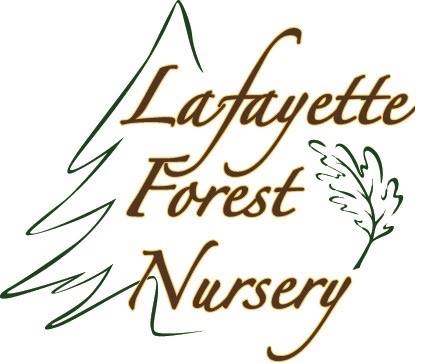Tips and advice
planning your gardens and landscape
When creating your outdoor space, take the time to make your gardens fit the site, they should flow with your location and look as though they evolved naturally.
What are your needs and long term goals for the site? Style and size are important and need to work with the structures and site.
What natural assets and anchors already exist on the site?
Where do you want color or a focal point?
Don't forget to consider your lifestyle and the maintenance required to keep your gardens looking great year round. Don't over-do it; plan what you can manage! Consider the seasons including winter; plan to enjoy your gardens all months of the year and think about the view from your windows in winter.
Where might you need evergreens or a natural screen? Is there a natural place for a garden path or walk way? Do some areas sit low and are naturally moist?
Planning a perennial bed or border
Plan for the seasons - the design of your perennial bed should provide a wave of color through-out spring, summer and into fall.
Don't overlook adding shrubs, interesting evergreens and ornamental trees for
- additional interest with branch structure and bark
- Provide anchors to the garden
- Invite birds in the winter
- Spring blossoms
Fill in a sunny perennial bed with zinnias, blue salvia, cleome, dahlias, cannas or other summer blooming annuals and bulbs to keep the garden colorful all summer.
- Consider color, texture and fragrance
- An all-white garden is stunning, especially as a shade garden
- Hot colors are dramatic- mix yellow, orange, red and violet
- Cool colors are relaxing- try lavender, grey-green, silver , blue
- Colors that sit opposite each other on the color wheel such as blue and yellow provide great contrast
Garden Accessories, the jewelry in your garden
Benches, gates, trellises, arbors, fountains and statuary can add a lot of interest. Once again size and style is important when choosing these accessories, it is easy to get carried away. In most cases simpler is better.
Placement of Garden Structures and Accessories
Benches or chairs should be in a spot where you will want to sit to:
- Enjoy the view or fragrance of the garden
- Meditation spot
- Relax with a friend, or take a break during gardening chores
- Watch wildlife
Outdoor seating areas, you may find that you prefer different locations on the site for different seasons of the year. A sunny spot is very inviting in spring and fall, but you may prefer a shady area for relaxing in the heat of the summer.
Spruce, Pine or Firs?
How to tell the difference between spruce, pine and firs.
Spruce, pine, fir, cedar, cypress and hemlock are among the most common conifers in our area. To identify the differences between spruce, pine and fir trees, look at the structure of the needles .
- Pine needles grow in groups of 2 or more on the twig
- Spruce and fir needles grow singularly
- The needles of a fir tree are flat
- Spruce needles are 4-sided and will roll easily between your fingers
End of Season Chores
Many gardeners look to fall and winter as a time to rest and recharge, but before resting- take time for a few more chores and you'll enjoy a more beautiful and healthier garden next spring.
- Plant spring flowering bulbs
- Clean up and remove all weeds, plant debris- especially any diseased foliage
- Do not compost any diseased foliage or weeds with seeds
- Turn over the soil and add compost and manure as needed
- Autumn is also a great time to divide perennials, plant new shrubs and trees
- Continue watering until plants are dormant, especially if rainfall is minimal
- Clean and store tools
- Mulch tender plants that need extra protection
- Mulch beds to prevent pets muddy paws from coming in-doors over the winter
Keep a Garden Journal
Although we always have good intentions of remembering everything that we observed in the garden, it just doesn't always happen. A garden journal can be your tool to:
- Record your observations
- Note which varieties performed the best
- Store plant tags and receipts that you don't want to lose
- Record any mistakes that you don't want to repeat
- Map out your perennials and bulbs, for ease of planning for new plants
- Start your wish list for the coming season
What can I plant that the deer won't eat?
Very hungry deer will eat just about anything, and deer resistant plants aren't necessarily deer proof. Deer generally avoid certain plants because of their texture and fragrance, some common plants that the deer seem to resist include:
Perennials
Astilbe
Baptista, Falsee Indigo
Brunnera
Coreopsis
Dianthuis - cottage pinks
Digitalis - Foxglove
Dicentra - Bleeding Heart
Gaura
Geranium (hardy) - Cranesbill
Iris
Lavendula - Lavender
Liriope
Nepeta - Catmint
Paeonia - Peony
Perovskia - Russian Sage
Salvia - Garden Sage
Annuals
Cleome
Heliotrope
Marigolds
Nicotiana
Blue Salvia
Snapdragon
Strawflower
Sweet Alyssum
Groundcover Plants
Ajuga - Bugleweed
Galium- Sweet Woodruff
Pachysandra
Ornamental Grasses
Blue Fescue
Bamboo
Erianthus ravaennae - Ravenna Grass
Pennisetum - Fountain Grass
Ferns
Christmas Fern
Cinnamon Fern
Japanese Painted Fern
Ostrich Fern
Shrubs
Barberis - Barberry
Buddleia, Butterfly Bush
Buxus - Boxwood
Caryopteris - Blue Mist Shrub
Callicarpa - Beautyberry
Chamaecyparis pisifera - Gold Mops
Cotinus - Smokebush
Cotoneaster
MIcrobiota - Russian Cyprus
Sambucus - Elderberry
Weigela
Looking for more gardening and landscaping tips? Visit Lafayette Forest Nursery for additional advice on garden and yard care.







